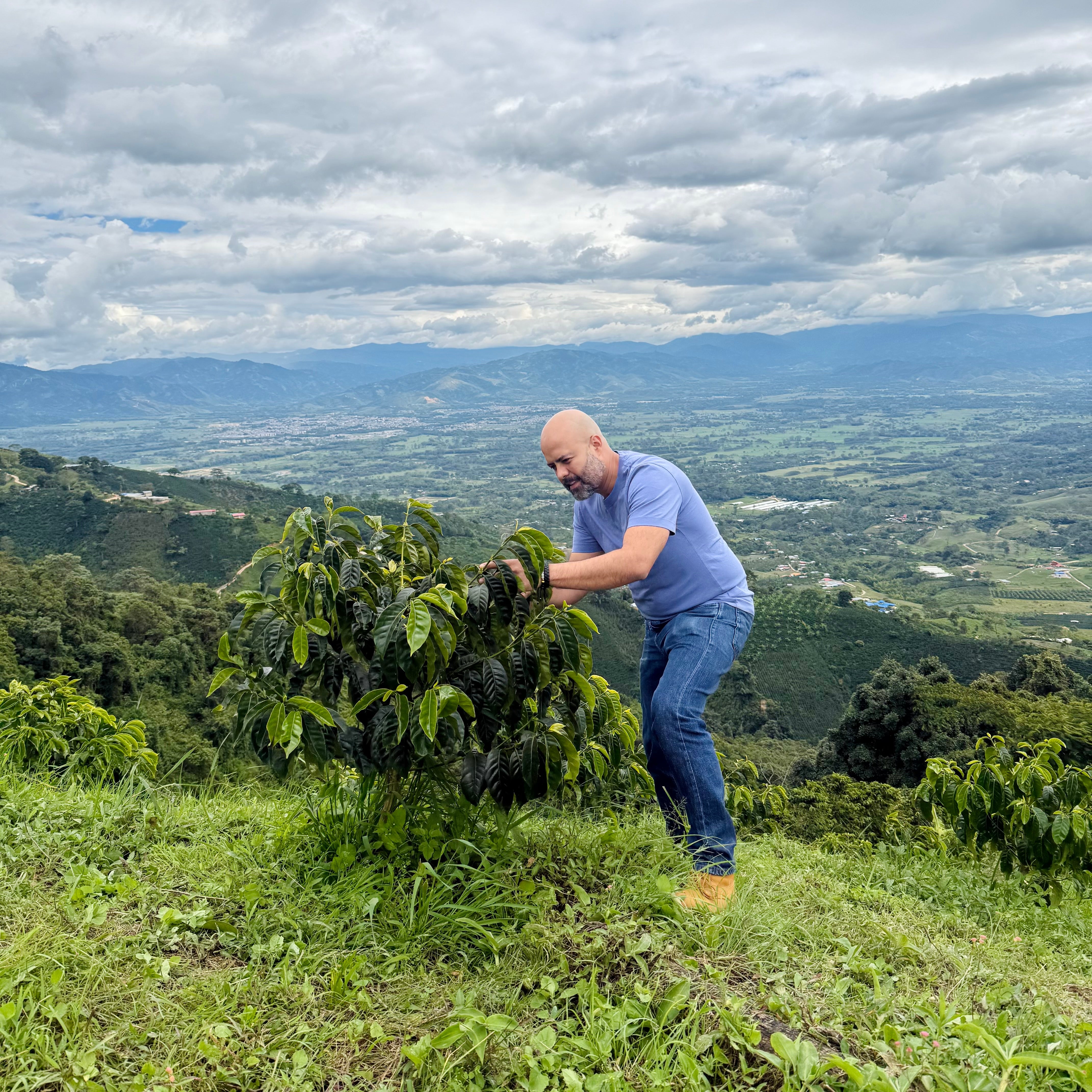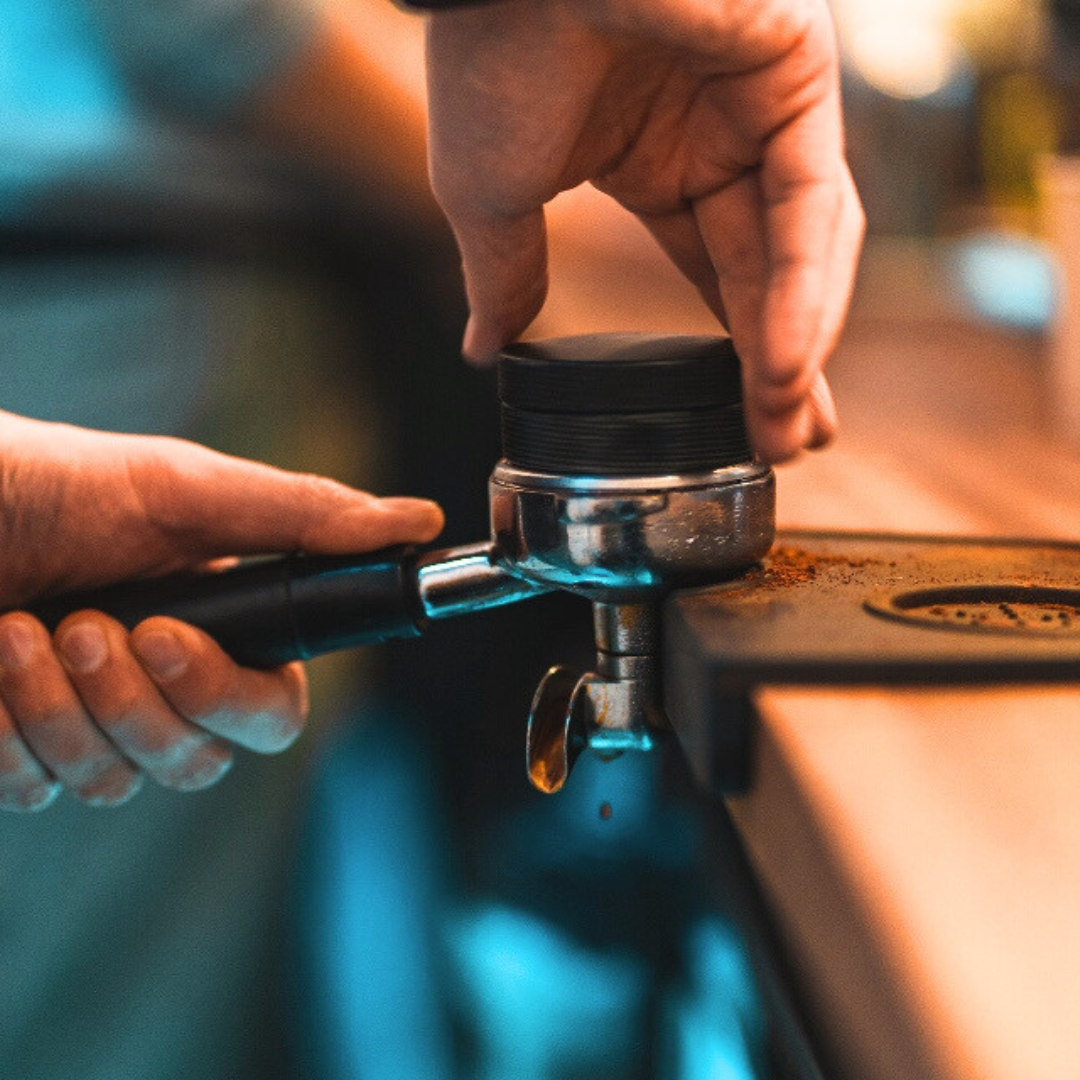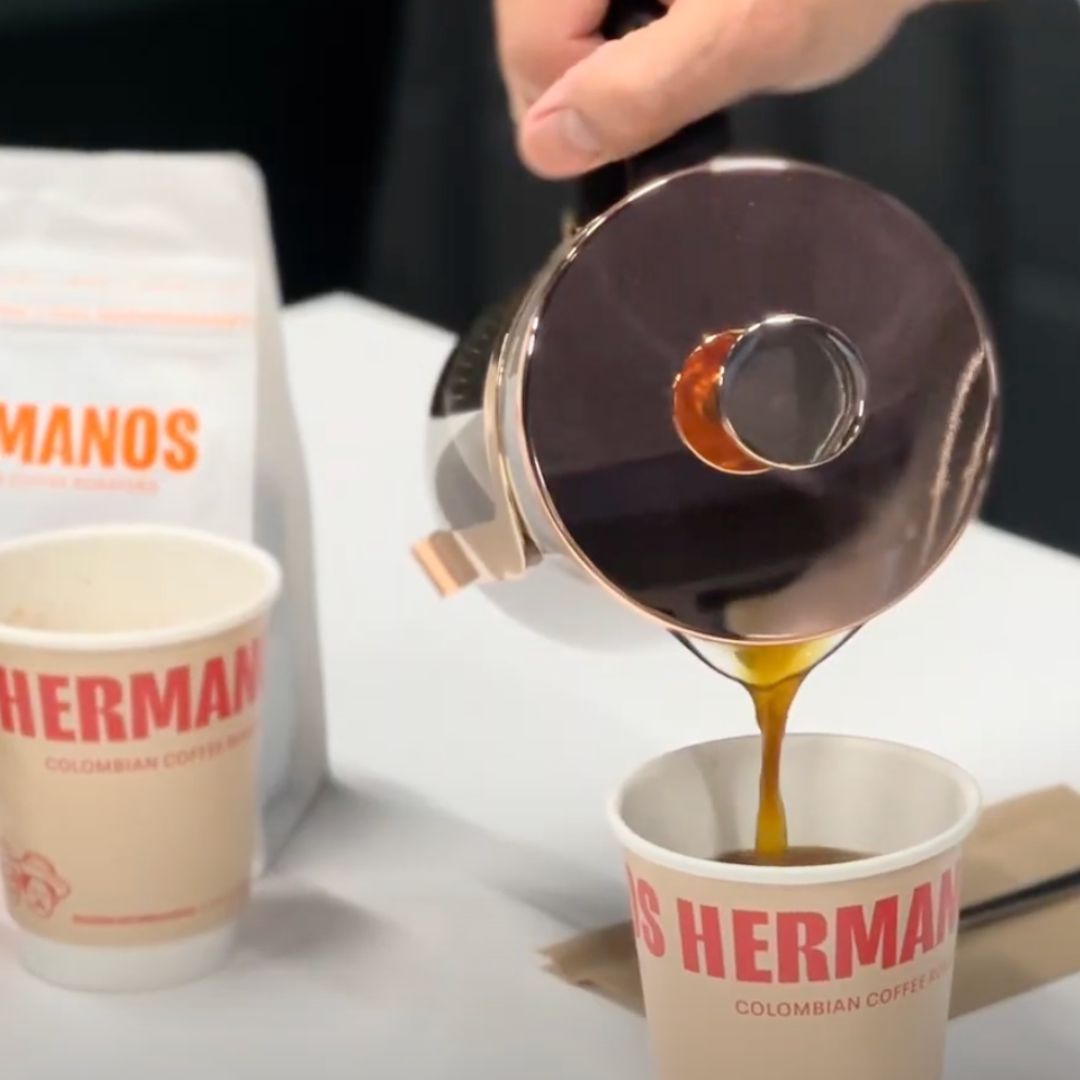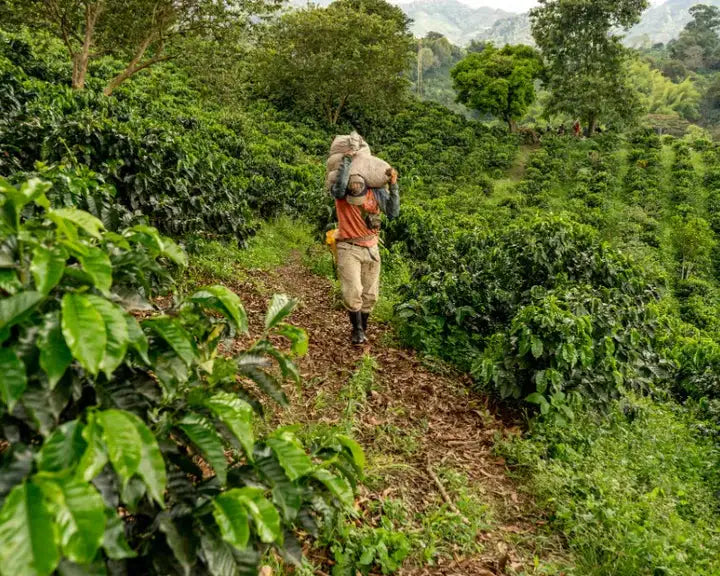Contents
-
Introduction To Coffee Traceability
-
What Are The Steps In The Coffee Supply Chain?
-
Why Is Traceability Important To The Specialty Coffee Market?
-
How Is Coffee Traceability Maintained?
-
Our Coffee And Its Traceability
The desire for sustainability and transparency in the specialty coffee industry is growing, with more interest than ever in where coffee comes from, who grows it, and how it gets from farm to cup.
While consumers appear to be the driving force behind the increased demand for transparency, each link in the coffee supply chain, from the producer to the buyer, has a vested interest in bringing greater traceability to the coffee industry.
In this post, we talk you through what coffee traceability is, how it impacts different levels of the coffee supply chain, and why knowing where your coffee comes from can result in not just better conditions for farmers, but also better-tasting coffee for you.
Introduction to Coffee Traceability

In the simplest sense, coffee traceability means being able to track the journey of your coffee along each step of the supply chain.
This includes being able to find out which country a particular type of coffee comes from, how it was grown and processed, how it was transported, how much growers were compensated, how the beans were roasted, and so on.
However, the term ‘coffee traceability’ can mean different things to different people. For the consumer, the notion of traceability is centred on where coffee beans come from and who grew them. For the producer, a traceable coffee system offers the chance of fairer pay, but also the ability to be known in the markets they are serving.
With this comes the chance to build a reputation for themselves among coffee importers and roasters, create a brand for their farms and receive feedback from coffee consumers, which can then inform future growing and processing practices.
For the producer, a traceable coffee system offers the chance of fairer pay, but also the ability to be known in the markets they are serving.
What are the Steps in the Coffee Supply Chain?
|
Growing
|
Whether growers are operating huge plantations or much smaller lots together with other producers in a coffee cooperative, this is where the supply chain starts.
|
|
Harvesting
|
Coffee is usually harvested by growers, using one of two methods: strip picking, which is when an entire crop of coffee is harvested at once using machines, and selective picking, which is when the best coffee cherries are picked by hand.
|
|
Processing
|
There are a few different coffee processing methods used by producers, including natural, washed, and honey. The option used can depend on several factors, such as available facilities or what flavour profile the producer wants to achieve.
|
|
Exporting
|
Exporting is the process of buying coffee from farms and selling it to international buyers. Exporters are often vital in connecting buyers in places like the US and Europe with individual producers who might be otherwise hard to find.
|
|
Shipping
|
Once coffee cherries are picked, it’s a race against time to get them roasted before their quality degrades. A lot of players are involved in shipping, including exporters, intermediaries, and packers. Coffee is then stored in natural fibre bags before being transported from its origin, either by air or sea.
|
|
Roasting
|
Roasting generally takes place in the country that the coffee has been imported to, where a company will either keep beans from one farm together resulting in single-origin coffee or combine coffee from different places to create a blend.
|
|
Selling
|
If a roaster isn’t selling coffee directly to a customer, they’re likely selling to coffee shops and retailers who will. Baristas at independent coffee shops are now frequently asked where their coffees come from, and if beans are traceable to a specific location, this makes their jobs much easier.
|
|
Drinking
|
The final step in the supply chain is when coffee is finally enjoyed by consumers. The changing interests and tastes of coffee drinkers around the world has no doubt had an impact on the traceability and transparency of the coffee industry.
|
Learn More About How the Coffee Supply Chain Works
Why is Traceability Important to the Specialty Coffee Market?

Traceability is a key consideration for many parties in the specialty coffee industry for several different reasons.
Sustainability and Ethics
Coffee transparency allows consumers, buyers, shops, and roasters to see how ethically and sustainably beans were grown. Whether the production and transportation of a product is achieved with good working conditions and fair pay for farmers or not, or how practices support or damage local agricultural environments, are huge determining factors in people’s purchasing decisions today.
Recognition for Growers
Traceability of coffee allows players in the coffee supply chain to recognise the hard work that growers put in. It allows buyers and consumers to understand more about producing regions in various countries as well as the intricate processes involved in preparing specialty coffee beans .
Increased recognition will not only help to make growers feel they are being fairly compensated for their efforts, but also encourage customers to put their money towards a coffee that they know is being produced by real people, in real places, which is a key factor when choosing a specialty coffee.
Reputation
Coffee shops, buyers, and roasters that have a reputation for being transparent are able to garner greater demand for their products in the specialty coffee market. A company's sourcing activities can also be a cornerstone of its branding.
Likewise, growers and producers who build a name for themselves through working with links in the supply chain that value traceability also benefit from this. They are more able to develop relationships with regular communication and longevity, helping them to expand their businesses as well as support local economies.
Flavour
A result of better coffee traceability is that coffee is treated not as something uniform where its value is measured in volume alone (as is the case with commodity coffee), but as a precious agricultural product where quality and price can vary depending on several different factors.
Tip: Of course, everybody’s coffee flavour preferences are different. Some people prefer Robusta beans to Arabica, or blended to single-origin. There is no right or wrong taste profile when it comes to coffee, but traceable coffee tends to have had more time and energy invested in it to ensure the flavour is high quality.
Transparency about coffee origin allows buyers and consumers to understand more about the processes and intricacies involved in preparing specialty coffee beans .
How is Coffee Traceability Maintained?

Coffee transparency, much like many other aspects of the specialty coffee industry, is a malleable term. However, there is in fact a legal framework surrounding traceability in many countries, in order to ensure certain standards are abided by.
For example, EU Food Law states that any food business operators must be able to identify from whom and to whom a product has been supplied. There are also industry practices for coffee labelling that require buyers to provide traceability information.
Every player in the coffee supply chain benefits from supporting a traceable and transparent coffee supply chain. It is a means to express commitment to product quality and foster strong relationships with consumers and buyers.
Shops
Coffee shops are able to maintain coffee traceability in two main ways:
-
Only purchasing beans from roasters or suppliers that clearly state their place of origin, ideally both country and farm.
-
Communicating with and providing information to customers about the growers and the locations that the beans were sourced from.
Buyers/Importers
Buyers are one of the main intermediaries involved in the coffee supply chain and often responsible for passing green beans from producers, to shops and roasters if more direct relationships are not set up between producers and roasters.
They maintain transparency by purchasing from farms or cooperatives with sustainable and transparent growing operations, compensating growers fairly for their work.
Roasters
Coffee roasters have a lot of incentive to use coffee that can be traced back to its origin. Not only does this increase demand for the beans they have roasted from consumers and specialty coffee shops, but it also allows them to sell their beans for a premium price — especially when beans are from micro-lots or very small experimental batches that can be branded as limited edition goods
Roasters are able to maintain transparency by only buying green coffee beans from buyers who are open about coffee traceability.
Every player in the coffee supply chain has a vested interest in coffee traceability, because it is a means to express commitment to product quality and foster strong relationships with consumers and buyers.
Discover How we Commit to Coffee Traceability
Our Coffee and Its Traceability

It is not always easy to immediately spot where a coffee comes from, especially if you’re buying takeaway coffees as many shops do not advertise information about their beans, such as country of origin.
When trying to do your part in promoting better coffee traceability in coffee, some of the things to look out for on coffee bags and menus are: the name of a country, farm, estate a coffee was grown on, or, the name of the lead farmer.
At Hermanos, we’re proud to only offer single origin Colombian specialty coffee beans, all of which are traceable and produced sustainably and ethically.
As we roast our own beans and try to work directly with cooperatives and growers in Colombia wherever possible, we’ve been able to simplify our supply chain and develop some amazing long-term relationships with our producing partners. That’s what we think makes our coffee so special.
Learn More About Our Range of Colombian Coffee!




























































